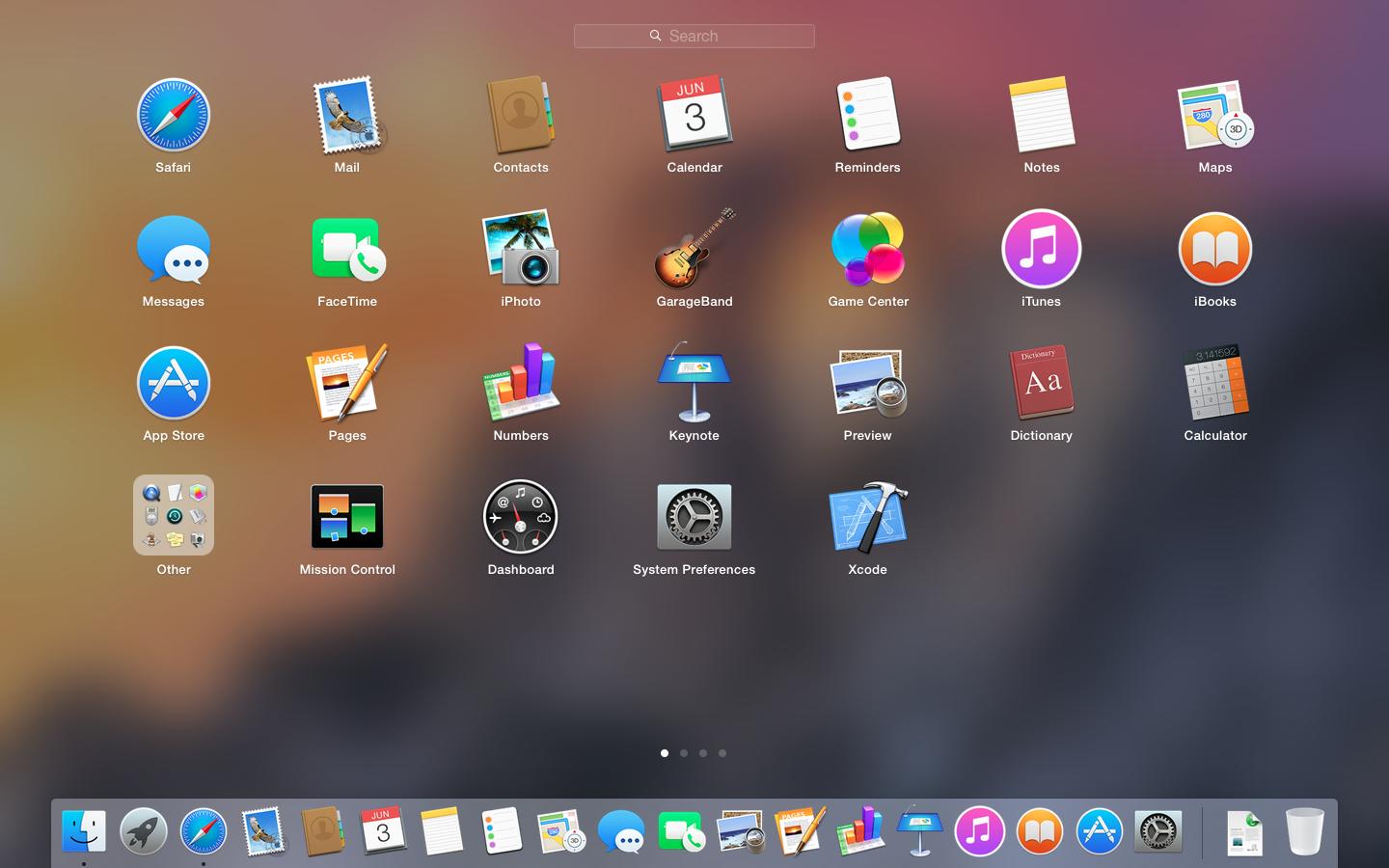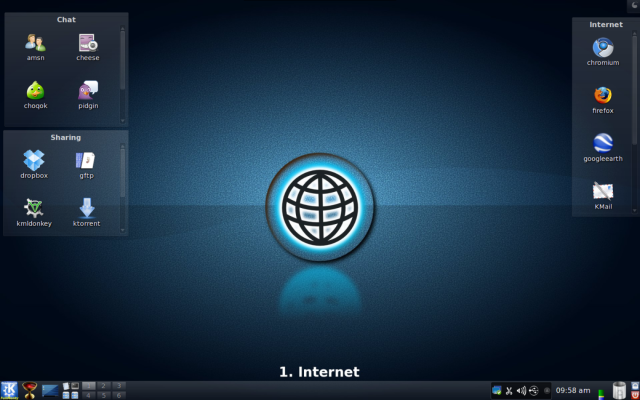A lot of Mac users have reported Fedora to be one of the best-functioning Linux distros you can run on a Mac. It is impossible to talk about Mac-like operating systems without talking about the Elementary OS project. This is a Linux distribution that adopts some of the design philosophy that Apple employs into their work. “Today, a PowerPC Linux user uses Linux instead of MacOS 9 for a number of reasons. It’s faster, more stable, is open source, has more software available, has a large open source community, and is free. Once MacOS X comes out, however, many of these benefits will be brought to the mainstream Mac operating system.
Continuing my previous blogpost… 🙂
Well, I had a few considerations when I was looking for the perfect PowerMac G4:
1. I was not sure whether I buy a QuickSilver or a Mirrored Drive Doors model; I had reasons to buy a PowerMac QuickSilver, as it was the first New World Mac I ever used. However, the Mirrored Drive Doors is a more robust machine, faster, way more recent, and runs with DDR memory.
2. It should be original, with little to no components replaced;

3. It should be working and with installed operational system.
Then, I found a Mirrored Drive Doors all original, with all install media (both Mac OS 9.2 and Mac OS X 10.3 Panther), keyboard, mouse, manual, ground wire, power cable and warranty certificate for good price. The only missing itens are the external speaker, LCD monitor and original keyboard, but I could live without that.

Everything was in a pretty good form, and when I booted Mac OS X Panther, I had a good surprise: It was running really, really fast. I tried to browse the web using Safari, and as it was unable to render any page, it crashed very often. I did remember Safari was terrible on its first versions before Apple started using WebKit and because of that, Mac OS X 10.0 – 10.3 also have Internet Explorer for Mac. Indeed it worked fine-ish.
I have heard about a patched Firefox version to run in PowerPC hardware in an awesome arstech post a few days ago, and since the PowerMac was running fine, I definitely must give a try in TenFourFox. However, I noticed that wouldn’t possible to run TenFourFox in Panther, and it required me to upgrade at least to Tiger (10.4) (or Leopard (10.5)). When I got a Leopard installer, I figured out that it wasn’t officially possible to install Leopard (nor Tiger) using a USB Stick, and I need to buy a rare 8GB DVD media to burn/install it. I didn’t like this approach, and it turned out I found out a way to install any Mac OS version using a USB Stick, but it does require some attention.
Preparing the USB Stick
I installed Mac OS Leopard twice on my PowerMac G4. I had some problems to make it boot, and I needed to reformat the USB stick a couple times until I got it fixed. To prepare the USB stick you will need to run Disk Utility from Mac OS up to Snow Leopard (10.6). Newer versions from Lion (10.7) onwards are unable to create partitions with Apple Partition Map disk label.
So, plug the USB stick in your Mac and run Disk Utility. Delete all its partitions and configure according to the below screenshots:

Press apply and wait until the formatting process ends.
After that, click in the ‘Restore’ tab, drag the .dmg file from your Mac OS installation and the USB stick to the Source/Destination fields. Press apply and wait — it will take several minutes to write the installation files on the USB stick, but this is normal.
Booting the installer in Open Firmware
When it finishes, reboot your PowerPC mac, and after the chime sound, press and hold command + option + o + f to enter on the Open Firmware prompt. This is what it looks like:
On it, run the following commands:
dev / ls — try to identify the location of your USB drive. In my case it was /pci@2000000/usb@18/disk@1devalias ud /pci@f2000000/usb@18/disk@1 — it will create an alias, so you don’t need to type the whole hardware addressdir ud:2, -- it will try to list the content on the second HFS partition in your USB stick.
If you can see the content of it, run the BootX file:
boot ud:2,SystemLibraryCoreServicesBootX
It will take a while, and then, the Mac OS X installer shall be displayed in your screen. 🙂
In my case, since I was intending to create a dual boot setup with NetBSD, I couldn’t use all the space when partitioning the disk in Disk Utility. So, if you’re intending to use a dual boot in your PowerMac with either Linux, FreeBSD or NetBSD, keep some free space on it (in my case, I kept 60GB to NetBSD, 20GB to Mac OS X) before hitting the ‘Install’ button. When you finish partitioning, proceed as usual as you were installing with a DVD drive.
On the 3rd part I will cover the NetBSD setup dual booting with Mac OS X Leopard. 🙂
Best regards,
Lucas Timm
Continuing my previous blogpost… 🙂
Well, I had a few considerations when I was looking for the perfect PowerMac G4:
1. I was not sure whether I buy a QuickSilver or a Mirrored Drive Doors model; I had reasons to buy a PowerMac QuickSilver, as it was the first New World Mac I ever used. However, the Mirrored Drive Doors is a more robust machine, faster, way more recent, and runs with DDR memory.
2. It should be original, with little to no components replaced;
3. It should be working and with installed operational system.
Then, I found a Mirrored Drive Doors all original, with all install media (both Mac OS 9.2 and Mac OS X 10.3 Panther), keyboard, mouse, manual, ground wire, power cable and warranty certificate for good price. The only missing itens are the external speaker, LCD monitor and original keyboard, but I could live without that.
Everything was in a pretty good form, and when I booted Mac OS X Panther, I had a good surprise: It was running really, really fast. I tried to browse the web using Safari, and as it was unable to render any page, it crashed very often. I did remember Safari was terrible on its first versions before Apple started using WebKit and because of that, Mac OS X 10.0 – 10.3 also have Internet Explorer for Mac. Indeed it worked fine-ish.
I have heard about a patched Firefox version to run in PowerPC hardware in an awesome arstech post a few days ago, and since the PowerMac was running fine, I definitely must give a try in TenFourFox. However, I noticed that wouldn’t possible to run TenFourFox in Panther, and it required me to upgrade at least to Tiger (10.4) (or Leopard (10.5)). When I got a Leopard installer, I figured out that it wasn’t officially possible to install Leopard (nor Tiger) using a USB Stick, and I need to buy a rare 8GB DVD media to burn/install it. I didn’t like this approach, and it turned out I found out a way to install any Mac OS version using a USB Stick, but it does require some attention. Cubase for mac os x free download.
Preparing the USB Stick
I installed Mac OS Leopard twice on my PowerMac G4. I had some problems to make it boot, and I needed to reformat the USB stick a couple times until I got it fixed. To prepare the USB stick you will need to run Disk Utility from Mac OS up to Snow Leopard (10.6). Newer versions from Lion (10.7) onwards are unable to create partitions with Apple Partition Map disk label.
So, plug the USB stick in your Mac and run Disk Utility. Delete all its partitions and configure according to the below screenshots:
Press apply and wait until the formatting process ends.
After that, click in the ‘Restore’ tab, drag the .dmg file from your Mac OS installation and the USB stick to the Source/Destination fields. Press apply and wait — it will take several minutes to write the installation files on the USB stick, but this is normal.
Booting the installer in Open Firmware
When it finishes, reboot your PowerPC mac, and after the chime sound, press and hold command + option + o + f to enter on the Open Firmware prompt. This is what it looks like:
On it, run the following commands:
dev / ls — try to identify the location of your USB drive. In my case it was /pci@2000000/usb@18/disk@1devalias ud /pci@f2000000/usb@18/disk@1 — it will create an alias, so you don’t need to type the whole hardware addressdir ud:2, -- it will try to list the content on the second HFS partition in your USB stick.
If you can see the content of it, run the BootX file:
Linux For Ppc Mac Os 10.10
boot ud:2,SystemLibraryCoreServicesBootX
It will take a while, and then, the Mac OS X installer shall be displayed in your screen. 🙂
In my case, since I was intending to create a dual boot setup with NetBSD, I couldn’t use all the space when partitioning the disk in Disk Utility. So, if you’re intending to use a dual boot in your PowerMac with either Linux, FreeBSD or NetBSD, keep some free space on it (in my case, I kept 60GB to NetBSD, 20GB to Mac OS X) before hitting the ‘Install’ button. When you finish partitioning, proceed as usual as you were installing with a DVD drive.
Linux On Powerpc Mac

On the 3rd part I will cover the NetBSD setup dual booting with Mac OS X Leopard. 🙂
Linux For Ppc Mac Os High Sierra
Best regards,
Lucas Timm
